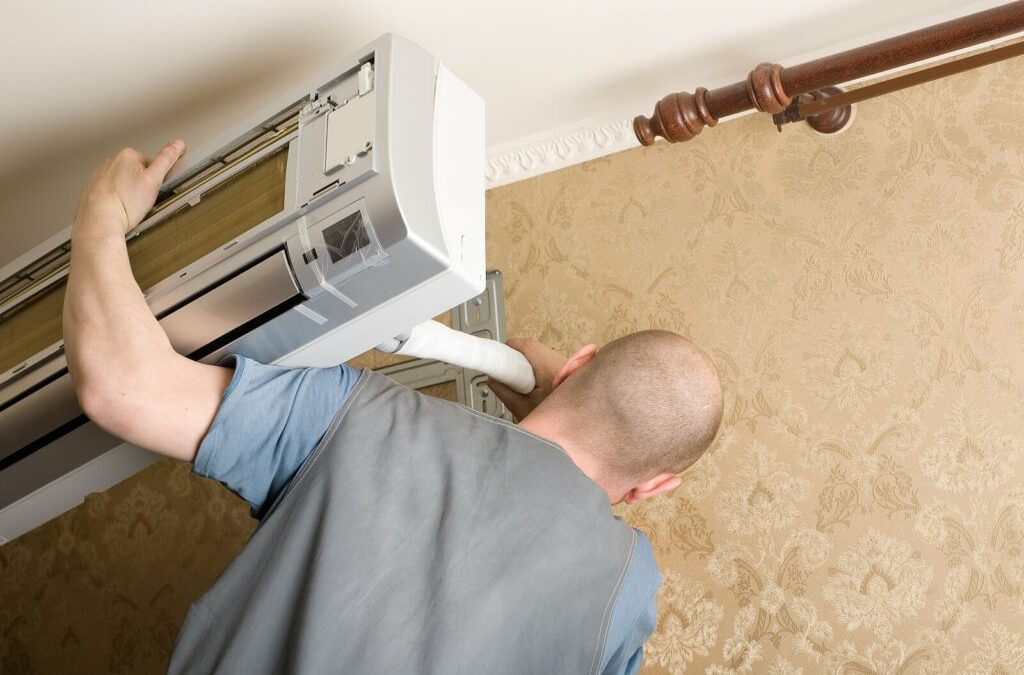When it comes to building a cooling system, many people concentrate solely on the interior unit, and they pay no attention whatsoever to the site that is chosen for the outside unit. Nevertheless, it is very vital for the efficiency of the air conditioner to locate a suitable location outside for the condenser.
Find somewhere cool and out of the sun:
Even air conditioners get warm and the hotter it is outside, the harder your unit has to work to maintain a reasonable indoor temperature. The air conditioner’s workload can be lightened by moving it out of the sun’s rays. A spot with some overhead cover would be ideal. The best placement for an air conditioner is on the east or north side of the house, where it will be naturally shaded against the sun throughout the hottest parts of the day.
Keep It Away From Pets:
Make sure to keep this item out of the reach of your pets, especially dogs, as they are renowned for soiling themselves within the house. Corrosion of the coils in a cooling system can result from exposure to dog urine, which can also create ugly stains on rugs and carpets. It is beneficial for both the flat and the pet to erect barriers outside the unit in order to prevent pets from entering.
Leaks of refrigerant are a common problem in air conditioning systems, whether they are used in commercial or residential settings. Due to the unfortunate fact that this substance is poisonous to humans as well as animals, it is essential that dogs be kept a safe distance away from the unit in order to prevent the chance for a refrigerant leak as well as any other mishap.
Place it away from rocks:
Keep it far from any rocks or cement, as this is the traditional surface for AC installations. Strong and long-lasting as cement and granite may be, they nevertheless radiate heat when exposed to the sun. Because of this, the air conditioning system has to work much harder to cool the surrounding environment.
The modest rise in temperature near the air conditioner can have a cumulative impact on energy costs, even if it is only slight. Putting it near mulch or grass can save you money on your monthly bill. This lowers the heat radiated from the system, allowing the air conditioner to remain cool and effective for longer.
Make sure there is enough space:
Make sure the outdoor air conditioner has enough room to breathe. Allowing the unit enough of breathing room allows it to efficiently chill the space by drawing in more outside air. It’s crucial to have adequate room for servicing exterior equipment on a regular basis. The outside location of the air conditioner should provide for easy access to the unit and sufficient space for people to move around.
Keep an eye out for deciduous trees:
In autumn trees will be bare. This has the potential to be aesthetically pleasing, but it can reduce the effectiveness of an HVAC system. Outdoor material such as leaves and pine needles can quickly block an appliance and hinder its capacity to function. Make sure to provide additional maintenance if placing the new unit under a tree is the best option.
Leaves and twigs that fall in the system in the autumn can impede its ability to provide a healthy airflow. Pollen and insects will enter the system in large numbers as the weather warms up in spring. Regular maintenance checks can reduce the accumulation of debris and the likelihood of system blockages.
When planning the placement of your home, it is important to take into account the sun’s rising and setting times. By doing so, you may keep the device out of the sun’s direct rays. The northernmost side of a building is usually the best option.
The landscape:
What is the building’s layout like in relation to the surrounding landscape? You don’t want to be confronted with the air conditioner every time you step outside or open the front door.
Try to find a place with some degree of anonymity. However, there are a few options if the sole option is a highly visible site. You can enclose it in a box, surround it with bushes, or build a screen.
Clear of obstructions for optimal airflow:
Check that there are no obstructions in the area around your air conditioner. That’s because the air conditioner will have to work more to maintain a comfortable temperature if there are obstructions in the way of the airflow.
Overworking the air conditioner can increase the monthly cost of electricity and necessitate more frequent maintenance. Therefore, make sure there is nothing blocking the air conditioner at all times.
It should be far from any heaters:
The temperature sensor will read incorrectly if the air conditioner is placed near a furnace or other heat-producing appliance. This tricks the air conditioner into thinking it needs to work more to chill the room, even while the temperature inside is perfectly comfortable. Because of the inaccurate reading, the air conditioner has to work harder than necessary to maintain a comfortable environment. So, don’t put the air conditioner next to a radiator or stove.
Make sure the ac is close to a power outlet:
Power is required for air conditioner operation. They serve no purpose without it. Therefore, you should locate a power source close to your home and set up the air conditioner there.
That way, you won’t need to run an extension cord from the AC to the wall. Find a power outlet and set up your air conditioner there. Experts can set up your air conditioner for you if there are power outlets in the area.


